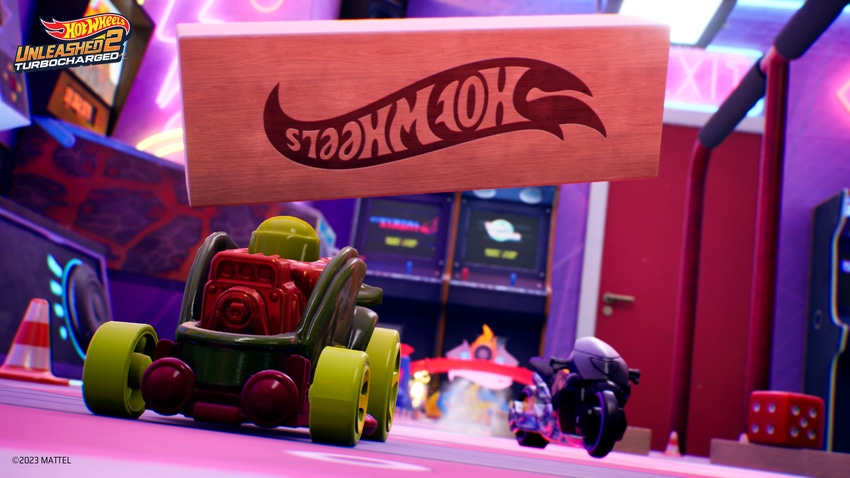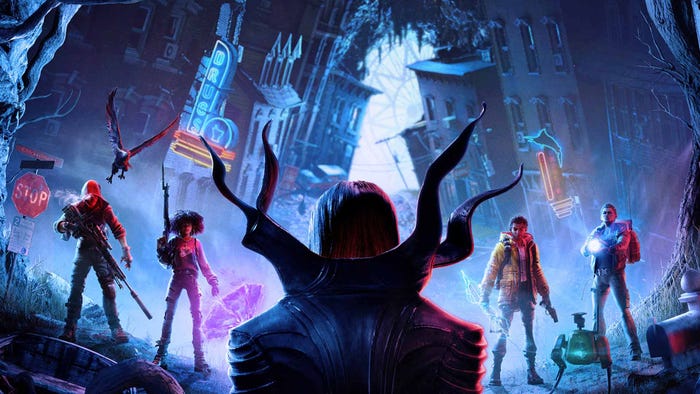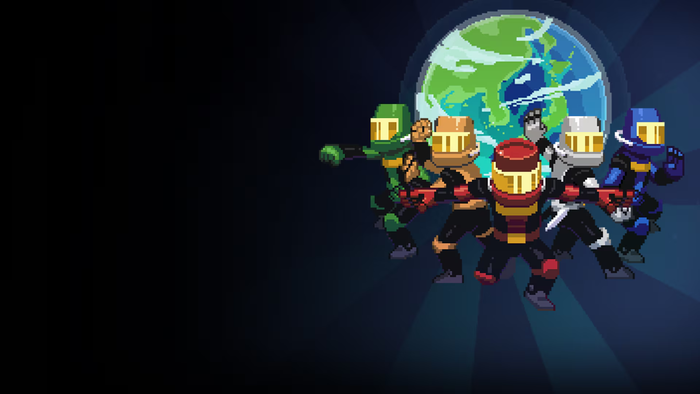
Featured Blog | This community-written post highlights the best of what the game industry has to offer. Read more like it on the Game Developer Blogs.
A closer look at Hot Wheels Unleashed 2 - Turbocharged Track Builder
The goal of the Track Builder, environments, and modules is to provide users with a tool that is easy to understand yet deep enough to express their creativity.

A closer look at Hot Wheels Unleashed™ 2 - Turbocharged Track Builder
Hi, I’m Francesco Riggi, lead game designer from Milestone, and today I’d like to get you caught up on what we’re up to over on the Hot Wheels Unleashed™ 2 - Turbocharged team.
Among the standout features of Hot Wheels Unleashed™ 2 - Turbocharged, the Track Builder is the one that most grants creative freedom to the user. With it, players can rreate all sorts of tracks with Mattel’s iconic orange pieces and can do it just like the game designers who made the official tracks.
In fact, all of the official tracks have been created using directly the in-game Track Builder with the same constraints imposed on players. For this reason, the fundamental requirements behind the design of the tool were two: usability and simplicity.
How does it work?
The Track Builder consists of different types of orange modules all based on five fundamental steps for track creation:
Environment selection
The starting module and its location
Continuation with the laying of the track body
Establishing the position of the finish line
Validation of the track for online publication
Leaving aside the first point for now (we will discuss environments later), users begin creating their track starting with the initial module. In this phase, they can decide which type of module to use, explore the environment to find the most suitable location according to their vision, and decide whether to create a circuit or a course (where the start and finish positions differ). In this phase, the user has the maximum freedom of movement within the environment, as the starting point is not constrained by any other module. For this reason, we paid particular attention to defining the limits beyond which the player cannot go (both with the module and the game camera).
Once the starting point is defined, it's time to structure the body of the track through three different Track Builder modes: Construction, Modify, and Interactive Object Placement.
In the Construction mode, users can add and modify modules on the track. This allows them to define the length of straightaways, the orientation and banking of curves, the angle of jump ramps, and more. Once the work on a module is complete, players can confirm it and move on. When a finish line is placed (for courses) or when automatic closure is used to connect the track to the starting module (for circuits), this mode becomes locked. To return to it, you must remove the final module.
The Modify mode is for those situations where users want to review their work and change individual modules or entire track sections. In this phase, users can navigate among the previously placed segments and decide which ones to transform or replace. Here, it's possible to completely remove one or more modules and change them according to one’s preferences. Once the edits are complete, automatic closure comes into play. As the name suggests, it applies transformations to the selected module to reconnect it to the next track section. However, these transformations must adhere to the limits imposed by the Track Builder. For example, you can't just delete ten modules and replace them with only one, because their total length would likely exceed the maximum length of a single segment.
In both modes described earlier, it is possible to customize the modules through a special submenu. Here, you can define their color and the elements placed on the side walls.
Finally, let's move on to the Interactive Object Placement mode. This mode is always accessible and allows users to enhance the gameplay of their track by using elements like stickers that activate vehicle boosts without consuming fuel, or barriers that break upon contact, slowing down vehicles.
Once the track is completed and the finish line defined, the player can modify it, test it by using a dedicated mode (available in the pause menu and always accessible), or validate it using the Tractor. During validation, it is necessary to complete a full lap, passing through all the checkpoints. If the user completes the lap, it means the track is suitable and meets all the edge cases that may arise during the race (unjumpable ramps or tunnels too narrow for larger vehicles, for example).
During the development of the Track Builder, there were many edge cases to consider, some representing entire tool modes, while others were related to simple value tuning. By analyzing them one by one, we arrived at the current result, which, as I mentioned earlier, aims to be user-friendly.
The interconnection between environments, modules, and tracks
As we have seen so far, the Track Builder is a powerful and versatile tool that provides the possibility to create unique tracks, thanks to its wide variety of modules, and interacts very well with the environments.
Normally, in racing titles, the track layout is initially defined and then "decorated" with surrounding elements. For the Hot Wheels Unleashed™ franchise, however, we have chosen the opposite approach. First, we have conducted an extensive study on the type of level design to offer - for example, whether to focus on verticality, like in the Arcade room, or to choose a predominantly horizontal area, as in Backyard.
When working on the white-boxing, the focus has been increasingly put on two elements that are particularly relevant to the Track Builder:
"Gameplay hooks" that inspire players while building their tracks. These elements can be used in various ways; some can be used to create "ghost" sections (with invisible modules), while others can serve as a pivot around which to develop a track section, such as cabinets or the planks of a treehouse under construction. In simple terms, any environmental asset can serve as a hook, thus a careful selection has been made to ensure visual realism, variety, and, most importantly, freedom of navigation within the environment.
Correct measurements to ensure viability for vehicles and modules. In each environment, the distance between assets is evaluated to provide sufficient space for both vehicle passage and bulkier modules.
The modules, on the other hand, represent the core of the Track Builder. Starting from the basic ones, which are essential elements for every track, we then find the special variants (like fire rings and cannons that shoot vehicles), and even the animated ones, such as giant spiders, snakes, and gorillas. Each module in the tool must provide variety to the user, ensure high creative freedom, and, most importantly, enable new gameplay dynamics. For this reason, each module is unique, but they all must adhere to rules that ensure a good user experience. For example, sticking to the topic of viability, each module must ensure viability for all types of vehicles while also not being excessively large to make it easy to use in the narrower areas of the environments.
In summary, the ultimate goal of the Track Builder, environments, and modules has always been to provide users with a tool that is easy to understand yet deep enough to express their creativity - all of this while taking into account every possible issue and addressing it beforehand. With over half a million tracks created by the community, the first Hot Wheels Unleashed™ title fully showcased all the effort poured into the tool, especially for the passion with which the craziest transformations were made! At this moment, I can't wait to discover what our users will create next, to inspire me, and join them in the creation of some new, unique tracks.
About the Author(s)
You May Also Like













